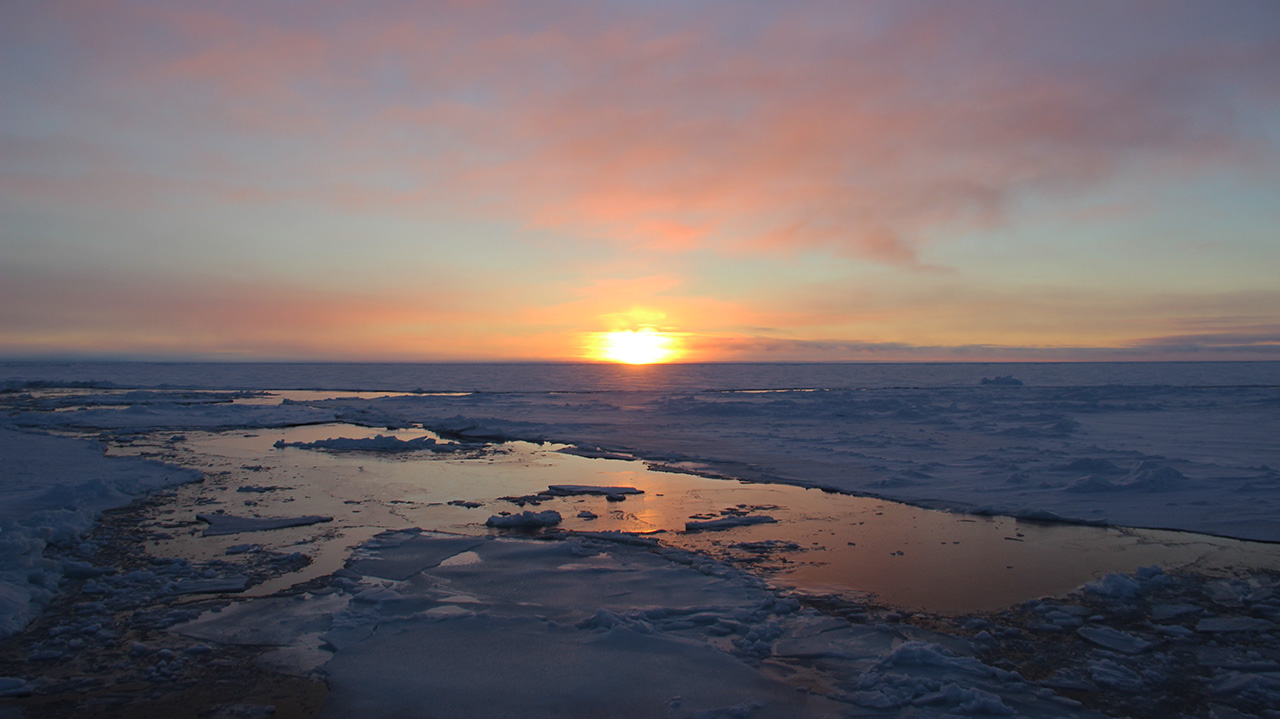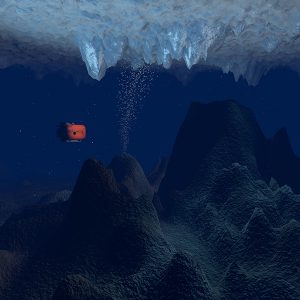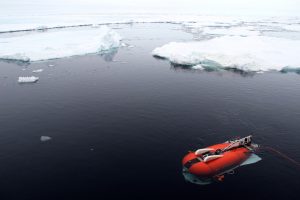HACON: Hot Vents in an Ice-covered Ocean

A team of WHOI scientists and engineers is headed to the Arctic Ocean with the goal of exploring, for the first time, an active hydrothermal vent beneath an ice-covered ocean. In addition, they are hoping to study the geological, chemical, and biological processes that might also exist on ice-covered ocean worlds in our outer solar system.
Chris German, a senior scientist at the Woods Hole Oceanographic Institution, has explored hydrothermal vents and tracked life in extreme environments on the seafloor of almost every ocean basin on Earth over the past 30 years and is now turning his attention to the search for extraterrestrial life by advancing exploration of Earth’s ocean.  Many believe that the most likely place to find life beyond Earth will be the moons of Europa, Enceladus, or another of our solar system’s planetary bodies where a liquid water ocean is in contact with a rocky seafloor—much like the conditions found in the Arctic. For this reason, German sees the Arctic as an analog for other ocean worlds that will help astrobiologists and planetary scientists prepare for their eventual search by better understanding the broad range of conditions that support life here.
Many believe that the most likely place to find life beyond Earth will be the moons of Europa, Enceladus, or another of our solar system’s planetary bodies where a liquid water ocean is in contact with a rocky seafloor—much like the conditions found in the Arctic. For this reason, German sees the Arctic as an analog for other ocean worlds that will help astrobiologists and planetary scientists prepare for their eventual search by better understanding the broad range of conditions that support life here.
The expedition team of 37 geologists, geochemists, physical oceanographers, micropaleontologists, microbiologists, ecologists, engineers, and NASA astrobiologists departs Svalbard, Norway on September 19 aboard the Norwegian icebreaker Kronprins Haakon. The WHOI team will bring the hybrid remotely operated vehicle Nereid Under-Ice (NUI), which is newly upgraded for this expedition to allow it to dive as much as 5,000 meters (3.1 miles) beneath the surface. With its lightweight fiber optic tether, it can also operate remotely up to 40 kilometers (24 miles) from the ship. NUI will conduct seafloor surveys and collect environmental data while operating as an autonomous underwater vehicle and then return to targets of interest as a remotely operated vehicle to record high-resolution video and collect samples.
In 2014, German took NUI on its first expedition to the Arctic aboard the German icebreaker Polarstern to a location 200 miles north of Greenland along the Gakkel Ridge. At the end of that trip, using a down-looking camera hanging from the side of the ship, German and his colleagues briefly glimpsed the vents that will be the focus of this year’s expedition.
The Gakkel Ridge is an ultra-slow spreading center that is part of the globe-spanning mid-ocean ridge, where volcanic and tectonic activity form new seafloor every day. Hydrothermal vents on many parts of the ridge are formed by seawater percolating down through cracks in the seafloor, reacting with hot rocks beneath the surface, and returning to the seafloor at firehose-like geysers and diffuse seeps. Lush ecosystems of at many of these are supported by microbes able to metabolize chemicals pouring from the seafloor.
The same is almost certainly true of the mid-ocean ridge in the Arctic Ocean, but no one has been able to explore it because constantly shifting sea-ice makes it difficult to effectively deploy a conventional ROV for any length of time. NUI overcomes this limitation with its fiber optic tether, which allows it to work on the seafloor independently of any drift in its surface support ship caused by the movement of sea ice.
Because the Arctic Ocean basin has been cut off from the deep seafloor of the North Atlantic and Pacific Oceans for millions of years, organisms that exist there are likely be completely different from those at vents anywhere else in the world. In addition, chemical reactions beneath the seafloor of the Gakkel Ridge, which exposes hot mantle rock to recirculating flows of seawater, could be similar the processes at work on other ocean worlds, making it critical to mission planners preparing for eventual exploration of Europa, Enceladus, and beyond.
NOAA's Office of Ocean Exploration and Research and FRINATEK are supporting German’s research.

